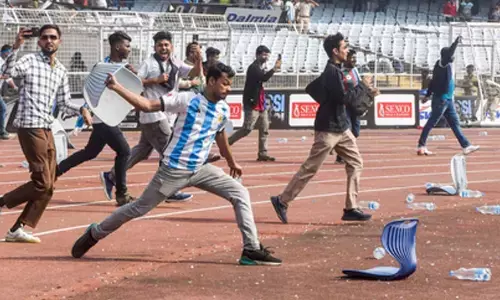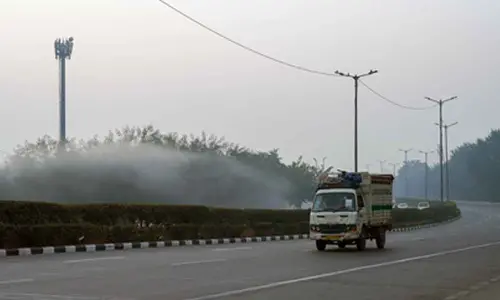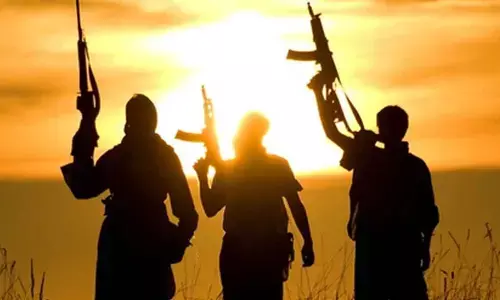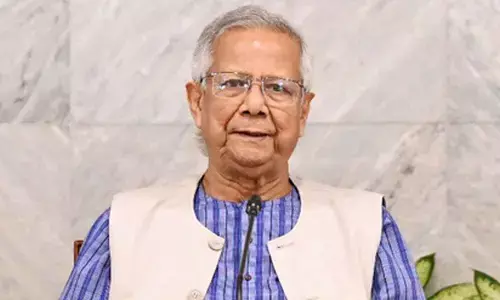A brief history of India’s struggle for freedom from the British colonial rule

When one surveys the history of countries in the world today which have succeeded in freeing themselves from the clutches of colonial powers, the struggle for freedom in India – non-violent and peaceful as it was – surely represents a unique example.
When one surveys the history of countries in the world today which have succeeded in freeing themselves from the clutches of colonial powers, the struggle for freedom in India – non-violent and peaceful as it was – surely represents a unique example.
It’s a shining example of people from different castes, creeds, races, communities and faiths coming together in an uprisal against exploitation and discrimination. What is indeed remarkable about the movement is the fact that it is a saga of sacrifices, unending patience and remarkable unity among groups otherwise divided on political, regional and ethnic grounds.
In what follows we shall briefly be looking at the landmark events of this remarkable chapter in the history of the world.
The story begins to unravel itself with what is known as the “Sepoy Mutiny” in 1857 which lasted over two years. It started with the rebellion by the soldiers of the East India Company's Army in India, in protest against the belief that the cartridges of the bullets, used by them for their rifles, contained beef causing revulsion to the soldiers most of whom were Hindus.
The Indian National Congress (INC) was founded in 1885. Its founders included Allan Octavian Hume, a member of the Theosophical Society, Dadabhai Naoroji and Dinshaw Wacha. In the late nineteenth and early to mid-twentieth centuries, INC played a significant role in the Indian independence movement, with millions of members and coming together in fight against in the British colonial rule.
The next important event was the Partition of Bengal announced in July 1905, by the Viceroy of India, Lord Curzon. It was given effect to on 16 October 1905. The predominantly Muslim areas in east India, and the largely Hindu western areas, were separated. The Hindus were angered by what was known as the "divide and rule" policy.
Thereupon on the Hindus and Muslims formed separate organizations and Bengal was reunited in 1911.
The next important milestone in the history of the struggle for freedom was the establishment of the All-India Muslim League during the early years of the 20th century. It argued for a separate Muslim-majority nation. Finally, in 1947, British India was partitioned.
INC was divided into two groups mainly by extremists and moderates. The “three Ps” minor became the slogan for the moderates. In a meeting held at Nagpur, while the extremists wanted Lala Lajpat Rai or Balgangadhar Tilak as the President, the moderates wanted Dr. Ghosh to be President. Gokhale changed the meeting place from Nagpur to Surat fearing that otherwise Tilak would get elected.
The Lucknow Pact was an agreement between INC and the Muslim League (ML). Muhammad Ali Jinnah, then a member of INC, as well as leader of ML. The pact resulted in pressure being brought upon the British government for adopting a liberal approach, giving Indians more authority and for safeguarding the Muslim demands. The Nightingale of India, Sarojini Naidu, gave him the title of “the Ambassador of Hindu-Muslim Unity”.
The Lucknow Pact also was another agreement which brought about cordial relations between the two prominent groups of the Indian National Congress – the "hot faction" or “garam dal” led by Bal Gangadhar Tilak, and the moderates or the "soft faction", or the “naram dal” led by Gopal Krishna Gokhale.
“Father of the Nation” Mahatma Gandhi, was easily the most important of the leading of the movement. He led from front the pacifist role of the movement and won the admiration and respect of the western world, especially countries which were under the clutches of the imperialism. Gandhi had earlier spearheaded movements demanding civil rights in many countries, especially the USA and South Africa. He and Leo Tolstoy wrote to each other regularly – a correspondence which led to the non-violence movement for Indian independence.
In Champaran village, farmers were forced to grow cash crops and pay heavy taxes, even in the face of a severe famine. Under Gandhi’s leadership the farmers made a non-violent protest for their rights, which were consequently restored. He also played a key role in securing Muslim support for INC – by upholding the right of Islamic Caliphs in Turkey.
Following the Jallianwala Bagh massacre, and other similar events, Gandhi led a series of protests. His determination grew resulting in the mobilisation of a large following. He then called for a nation-wide non-cooperation movement and for the boycott of all British goods and services.
Following the world-wide “Great Depression,” in 1930, the British government hiked up taxes in India. The British people were able to withstand the impact as Indians paid unfair taxes on items like salt. There followed what is known as the “Salt March” or “the Dandi Satyagraha”. The march extended from Sabarmati to Dandi. Gandhi cooked salt and was arrested, igniting the passions of Indians and leading to a nation-wide agitation.
This attracted the attention of the whole world, with the atrocities perpetrated by the British government being witnessed by the whole world. Nearly sixty thousand people were imprisoned and, as result, the government withdrew the levy.
Three rounds of what were called “Round Table Conferences” then ensued in which the demand for self-rule was placed.
In the Second World War which broke out in 1939, the British government unilaterally included the Indian Army, enraging the nationalists. Gandhi and the whole of India opposed the move, pointing out that it was hypocritical and wrong for the Indian Army to join a fight in favour of a democratic struggle when such freedom was unavailable citizens of India.
What is popularly known as the “Quit India” movement followed, marked by massive boycotts and civil disobedience. Citizens for arrested in the protests which seriously disrupted British trade, especially around the Indian Ocean.
These developments culminated in the call for independence and, finally, led to the grant of independence in 1947.




















